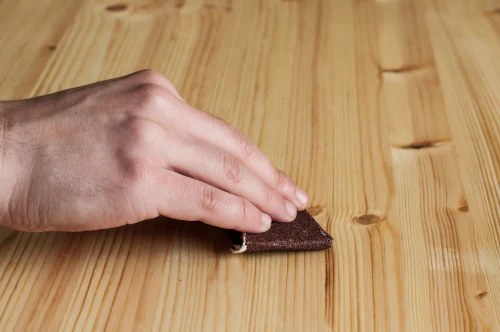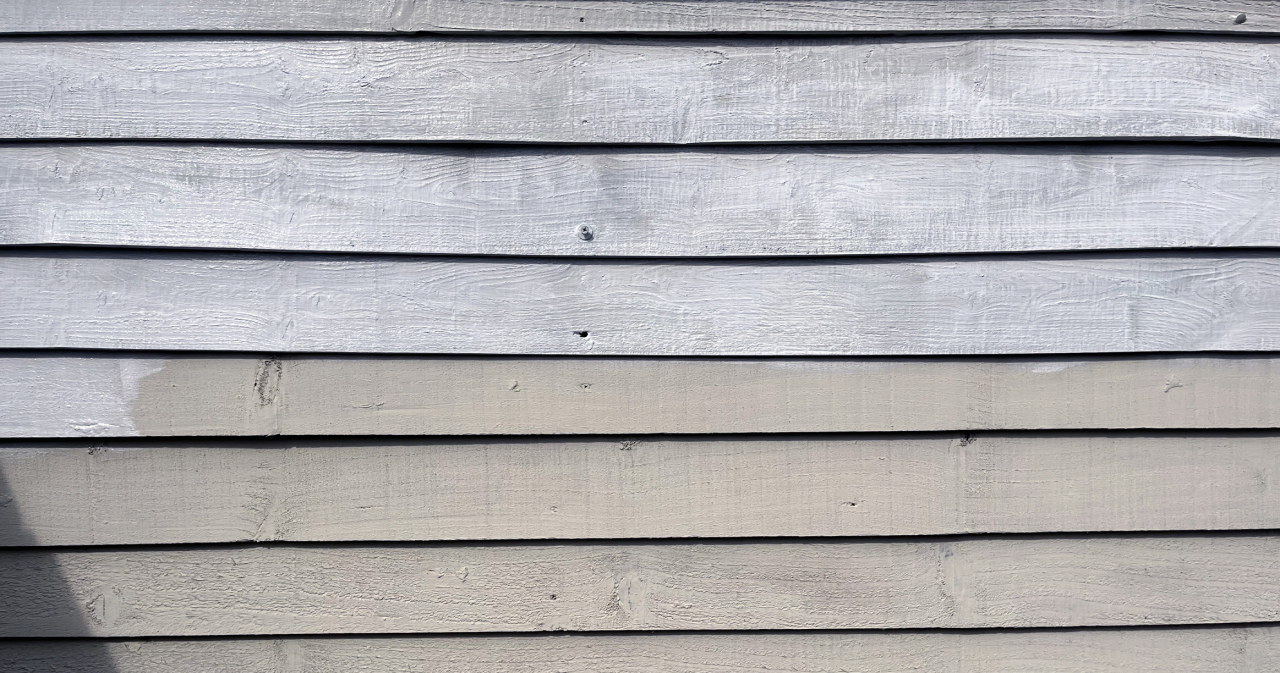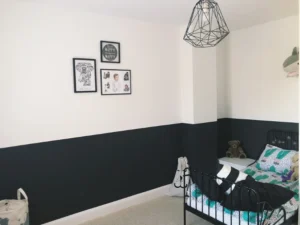When it comes to painting projects, choosing the right type of paint for the material is crucial to ensure durability and a professional finish. Masonry paint is commonly used on brick, concrete, and stone surfaces due to its resilience against weather conditions.
But what if you want to use masonry paint on wood? Whether you’re considering this option for outdoor furniture, a wooden fence, or a shed, understanding the implications and best practices is essential.
This guide will explore whether masonry paint can be used on wood, the potential benefits and drawbacks, and how to achieve the best results if you decide to go ahead with this option.
Understanding Masonry Paint: What Is It?
Before diving into whether masonry paint can be used on wood, it’s important to understand what masonry paint is and how it differs from other types of paint.
Characteristics of Masonry Paint:
- Composition: Masonry paint is specifically formulated for porous, rough surfaces like brick, stone, and concrete. It often contains additives that make it resistant to water, mold, and mildew, which is why it’s popular for exterior use.
- Durability: This type of paint is designed to withstand harsh weather conditions, including UV rays, rain, and temperature fluctuations. It has a thick consistency that provides excellent coverage and protection for masonry surfaces.
- Breathability: Masonry paint is breathable, meaning it allows moisture to escape from the underlying surface while preventing water from penetrating. This helps prevent issues like blistering or peeling.
Can Masonry Paint Be Used on Wood?
The simple answer is yes, you can use masonry paint on wood, but there are several factors to consider before doing so. While masonry paint is not specifically designed for wood, it can be applied with the right preparation and technique.
However, the results may vary depending on the type of wood, the condition of the surface, and the environmental conditions.
Potential Benefits
1. Durability
One of the main reasons homeowners consider using masonry paint on wood is its durability. Masonry paint is formulated to withstand extreme weather conditions, making it a suitable option for outdoor wooden structures like fences, sheds, or garden furniture.
2. Water Resistance
Masonry paint’s water-resistant properties can be beneficial for wood exposed to rain or humidity. By forming a protective barrier, it helps prevent water from penetrating the wood, which can lead to rot or warping over time.
3. UV Protection
Masonry paint is often designed to resist UV rays, which can cause wood to fade and deteriorate. Using masonry paint on wood could provide an additional layer of protection against sun damage.
Potential Drawbacks
1. Adhesion Issues
Wood and masonry have different surface properties, which can affect how well paint adheres. Masonry paint is designed for rough, porous surfaces, while wood is generally smoother and less porous. This difference can lead to adhesion issues if the wood is not properly prepared before painting.
2. Flexibility Concerns
Wood expands and contracts with changes in temperature and humidity. Masonry paint, being less flexible, may not accommodate these movements, leading to cracking or peeling over time. This is particularly concerning for exterior wood exposed to varying weather conditions.
3. Aesthetic Considerations
Masonry paint has a thick consistency and matte finish, which may not be desirable for all wood projects. The final appearance may not match the smooth, glossy finish that is often preferred for wooden surfaces.
How to Apply Masonry Paint on Wood: A Step-by-Step Guide
If you’ve decided to use masonry paint on wood, following the right steps will help you achieve the best results. Here’s a detailed guide on how to prepare the wood and apply the paint effectively.
Step 1: Choose the Right Type of Wood
Not all types of wood are suitable for masonry paint. Softwoods like pine may absorb paint differently than hardwoods like oak. Consider the type of wood you’re working with and test a small area first to see how the paint adheres and dries.
Step 2: Prepare the Wood Surface
Proper preparation is crucial to ensure good adhesion and a smooth finish.

- Clean the Surface: Start by cleaning the wood surface to remove dirt, dust, and any existing paint or varnish. Use a mild detergent and water, and allow the wood to dry completely.
- Sand the Surface: Sand the wood with medium-grit sandpaper (around 120-150 grit) to create a rough texture that will help the masonry paint adhere better. After sanding, wipe away any dust with a damp cloth.
- Prime the Wood (Optional): While masonry paint can be applied directly to wood, using a primer designed for wood can improve adhesion and create a more even finish. Choose a water-based or oil-based primer suitable for exterior wood surfaces.
Step 3: Apply the Masonry Paint
Once the wood is prepared, it’s time to apply the masonry paint.
- Stir the Paint: Before starting, stir the masonry paint thoroughly to ensure an even consistency. If the paint is too thick, you can dilute it with a small amount of water (following the manufacturer’s recommendations).
- Use the Right Tools: Use a high-quality brush or roller designed for exterior paint. For large areas, a roller will help cover the surface more quickly, while a brush is better for detailed work or edges.
- Apply the First Coat: Apply a thin, even coat of masonry paint to the wood, working in the direction of the grain. Avoid applying too much paint at once, as this can lead to drips and an uneven finish.
- Allow to Dry: Follow the manufacturer’s instructions for drying times between coats. Typically, masonry paint may take longer to dry on wood than on masonry surfaces.
- Apply Additional Coats: Depending on the desired coverage and finish, you may need to apply one or two additional coats. Allow each coat to dry thoroughly before applying the next.
Step 4: Seal the Paint (Optional)
While masonry paint is designed to be durable, adding a clear sealant can provide extra protection, especially for wood exposed to harsh weather conditions. Choose a sealant compatible with masonry paint and apply it according to the manufacturer’s instructions.
Tips for Long-Term Maintenance
Using masonry paint on wood requires ongoing maintenance to ensure the finish remains intact and the wood is protected.
1. Regular Inspections
Periodically inspect the painted wood for signs of wear, peeling, or cracking. Addressing these issues early can prevent more extensive damage.
2. Repainting
Over time, the paint may fade or wear away, especially on surfaces exposed to the elements. Repainting as needed will help maintain the appearance and protection of the wood.
3. Cleaning
Keep the painted surface clean by washing it with mild soap and water as needed. Avoid using harsh chemicals or abrasive cleaners, as these can damage the paint.
Alternative Paint Options for Wood
If you’re unsure about using masonry paint on wood, several alternatives are specifically designed for wooden surfaces:
1. Exterior Wood Paint
Exterior wood paint is formulated to handle the unique properties of wood, including its tendency to expand and contract. It provides a durable, flexible finish that resists cracking and peeling.
2. Wood Stain
Wood stain penetrates the surface of the wood, enhancing its natural grain and providing a protective layer. Stains are available in various colors and finishes, from matte to glossy.
3. Acrylic Paint
Acrylic paint is a versatile option for wood, offering a wide range of colors and finishes. It dries quickly, adheres well to wood, and provides a durable finish suitable for both indoor and outdoor use.
4. Oil-Based Paint
Oil-based paint offers a smooth, glossy finish that is highly durable and resistant to water and weather. It is particularly well-suited for exterior wood surfaces, though it requires more drying time and cleanup.
Conclusion
While masonry paint can be used on wood, it’s essential to weigh the benefits and drawbacks before starting your project. The durability, water resistance, and UV protection offered by masonry paint make it an appealing option for outdoor wood surfaces, but potential adhesion and flexibility issues should not be overlooked.
Proper preparation, careful application, and ongoing maintenance are key to achieving a successful finish when using masonry paint on wood.
If you prefer a finish specifically designed for wood, consider using exterior wood paint, stain, or other wood-specific products that offer flexibility and longevity.
By understanding your options and following the best practices outlined in this guide, you can achieve a beautiful, long-lasting finish on your wood surfaces, regardless of the paint you choose.




